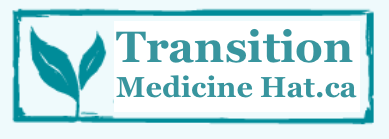
 |
 |
 |
 |
 |
Take Action Around Your HomeEach of us can take personal action. Although this may seem like a tiny contribution, we can make a meaningful difference. With each of these topics, imagine if just 10% of Medicine Hat residents participated.!Many of these actions take place in our yards. Whether it is installing a clothesline or planting a few native species of plants, help make your yard, and your neighbourhood, more attractive and interesting. Once you get started, you will want to show your friends the result. Invite people over for a BBQ, and to learn more about how you are helping. |
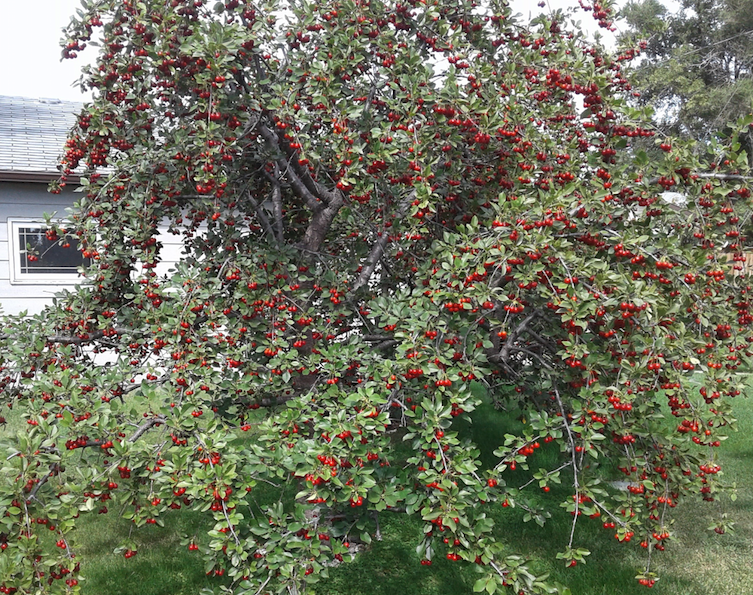 |
This cherry tree in Crescent Heights shows that we could be growing more fruit. Apple and plum are particularly reliable in southeastern Alberta. Raspberries and strawberries grow readily, and you might want to experiment with haskap berry bushes. You might want to check our the Alberta Hardy Fruit and Nuts Facebook page for more tips, or to get questions answered.
If you already have a fruit tree, you may want to share the abundant produce with your neighbours. |
||||
 |
Vegetable gardens bring fast results: you can be eating fresh greens within a month! By the end of summer, you can have tasty veggies every evening.
Congratulations to people already growing vegetables! This rewarding project grew rapidly during covid times, when our food supply change was threatened. If you want to take this to the next step, consider signing out one of the Library's Human Books. These allow you to chat one-on-one with a local expert. Compost King and Hi-Tech Gardening are two recommended titles. This proud gardener has giant tomatoes and sunflowers, and the corn is just getting going. Notice the perennial onions in the foreground. |
||||
|
|
|
||||
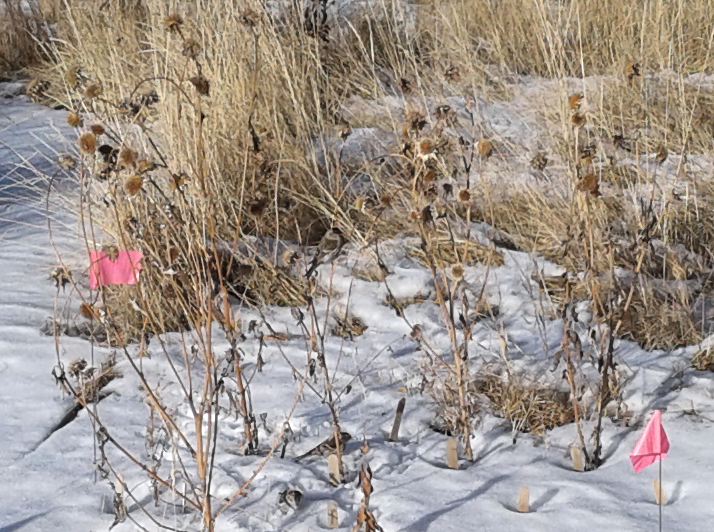 |
These prairie sunflowers were planted at Police Point as part of a wildflower demonstration plot. Although these flowers don't naturally grow in this park, three Common Redpolls found them. These tiny birds pecked at the seedhead, then hopped down and found the seeds on the snow. (I know the birds are hard to see. One is on the snow in the lower centre, and the second is right above that one.)
This scene reminded me of Nature's Best Hope, by Douglas Tallamy. He describes in detail why native flowers are so much more valuable for insects and birds than domestic plants. This picture shows that wild creatures can find and recognize the native plants. Tallamy encourages each homeowner to include a few native plants in their landscaping. In this way, migrating birds and other wandering animals can find food. I suggest we set at least 1% our our yard for wildlife. For an average yard, that would be about 50 square feet, the size of a bed. That seems, to me, to be a modest contribution, but is room enough for several perennial plants and maybe a small shrub. Contact me for details! |
||||
 |
Drying clothes outside seems to be the natural thing to do. It is free, smells great and the sunshine kills any germs. No need to buy chemicals that claim to make your laundry smell almost as good as if you dried it outside.
Although this saves money, it isn't an economic activity. If everyone used a clothes line, our use of electricity would decline, but solar energy's share of the energy mix would not go up. Our Gross Domestic Product would decline, as well. This simple example shows why measuring GDP is a poor way to monitor our society. Who would believe that doing laundry could be controversial? Using a clothes line goes against the rules in some of Medicine Hat's communities with landscaping restrictions. |
||||
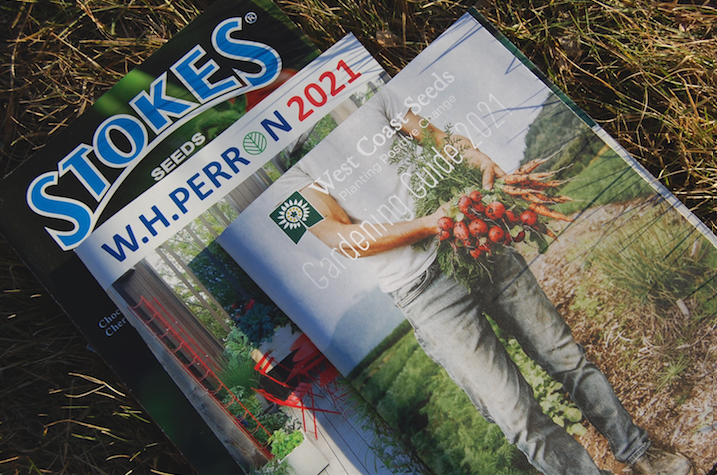 |
Spring is just around the corner, and it is time to order seeds for this summer's garden. Although we promote buying local, many interesting varieties of seeds cannot be found in hardware stores. The pictured companies are Canadian, at least.
West Coast Seeds is our current favourite. Their catalogue includes a lot of information on how to grow each plant, as well as a planting calendar specifically for the prairies.
|
||||
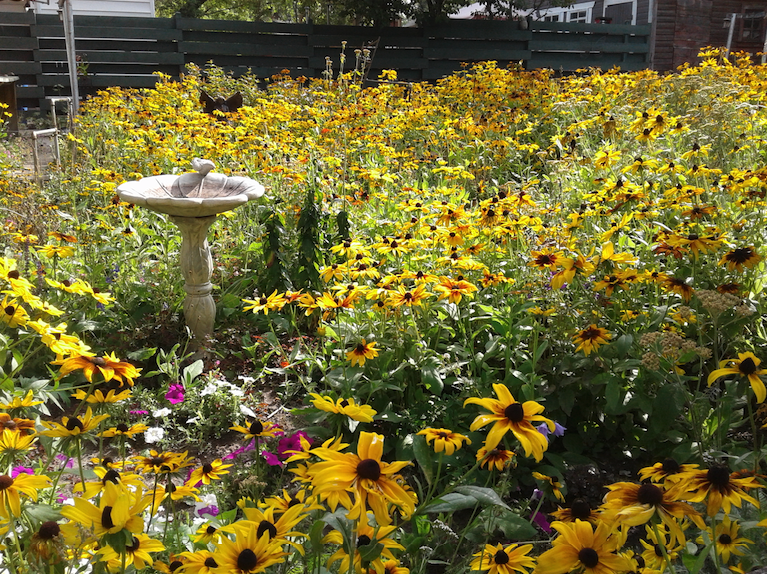 |
WOW!! This Cambridge Street gardener sure enjoys colour! And what a great place for bees! We could all take inspiration from this yard, and plant more flowers for our pollinator friends. | ||||
|
Photo by Rob Gardner
|
|||||
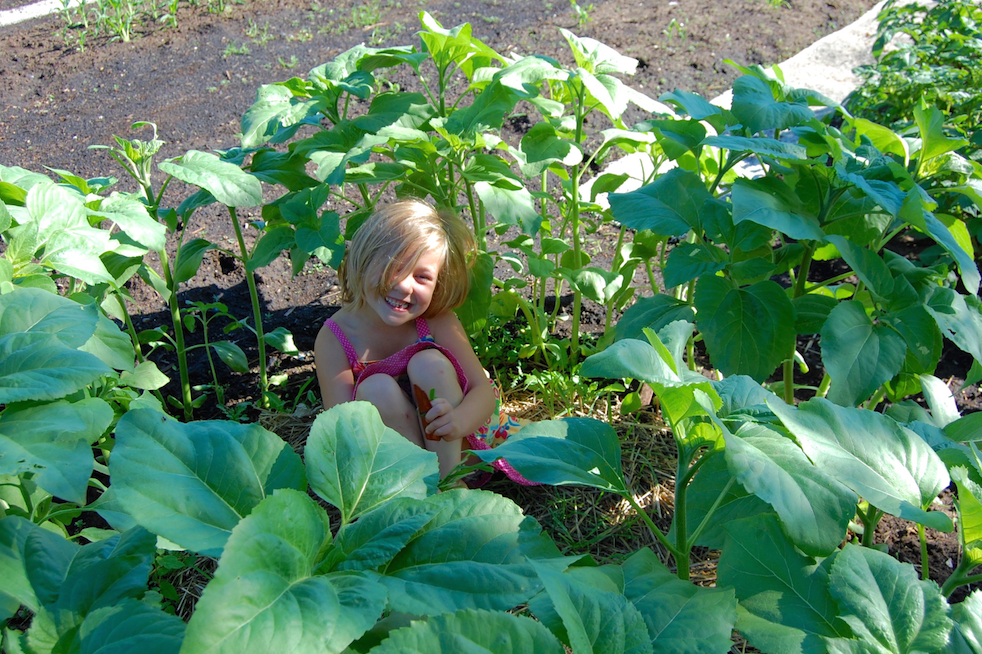 |
A happy gardener plays in a circle of sunflowers planted specifically for this. These plants grow fast enough for youngsters to appreciate.
If you have school-aged children, or grandchildren, why not try this in your backyard? (It works best if you plant a double circle of seeds, leaving a space for the entrance.) |
||||
|
|
|||||
 |
Soil is more than just dirt. Soil's active ingredient is the wealth of micro-animals squirming and wiggling under the surface. Hundreds of species of insect, arthropod, bacteria and fungus eat dead plant material and each other. At each stage, more nutrients are made available for our garden plants.
One important way to support this underground life is to protect the soil with a blanket of mulch. Dead leaves, grass clippings, finished compost or any other organic material will protect the soil from rapid temperature change while keeping it moist. I spread leaves over the vegetable beds when rain is predicted, so they will be settled down before they blow away. |
||||
|
|
|||||
|
|
|||||
 |
Police Point Nature Centre provides thoughts on how to ensure our insect friends can survive the winter in comfort. To summarize: leave your garden messy.
|
||||
|
|
|||||
|
Pollinating insects come in all sizes and shapes. Alberta has over 60 species of bumble bees alone. Many are particularly adapted to pollinate specific plants, or groups of plants.
Spend a few minutes watching a patch of flowers, and see how many kinds of insect visit. Wild flowers are often more attractive than domestic varieties. Some tame flowers have been selected just for appearance, and the ability to produce aroma and nectar has been reduced. Planting a few wildflowers, or flowers like herbs that have not been selected for their appearance, can significantly increase the number of native pollinators. Contact Transition Medicine Hat if you would like a few native flower seeds to grow in your yard. |
||||
| Photo by Rob Gardner
|
|||||
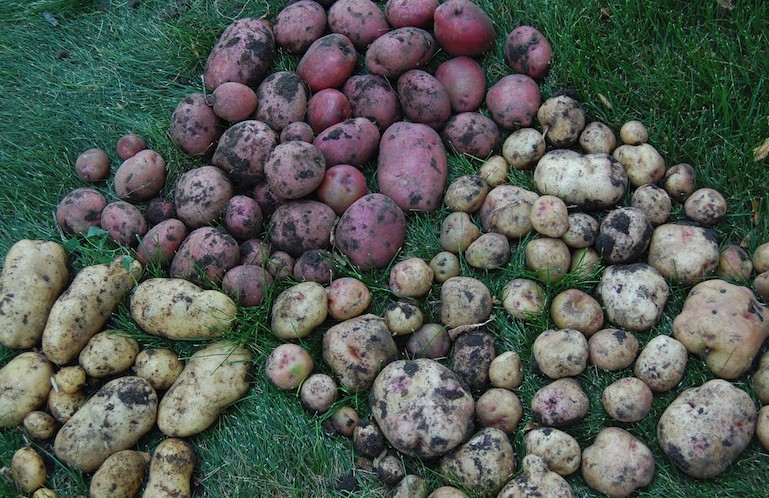 |
Homegrown potatoes taste great, and with a variety of colours, they can make dinner more interesting. The seed potatoes we used came bundled in a variety pack. | ||||
| Photo by Rob Gardner
|
|||||
|
|
Next Page |
